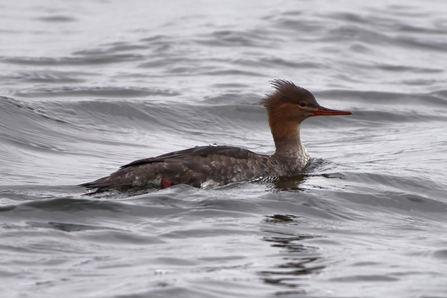
Red-breasted merganser
Photo credit: @sjnewton
Swallow
Photo credit: @OwlTurbot

Red-breasted merganser
Photo credit: @sjnewton
November was also the month sadly when Avian Flu took a hold at the reservoirs with dead or dying birds seen pretty much every day. Thanks in part to the swift collection of corpses by the Trust staff, it didn't seem to get worse as the month progressed and has largely been confined to canada geese.
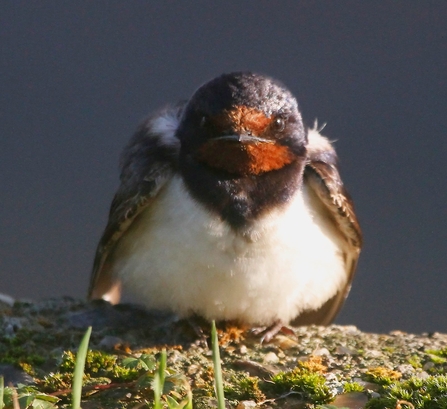
Swallow
Photo credit: Chris Farthing
A single barnacle goose appeared for the day on the 24th. Thanks to detective work from CF who found one of our ringed birds and the distinctive hybrid on a visit to Holyfield Farm at Fishers Green, we now have confirmation that our breeding birds come from the near-resident flock up the Lea Valley. The first shelduck re-appeared on the 21st - five days later than last year but seven days earlier than the year before.
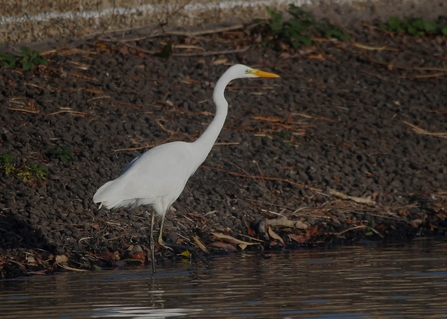
Great egret
Photo credit: Chris Farthing
It was a good month for ducks despite the largely balmy weather. Shoveler numbers fell from their October high but 78 were still around on the 11th although most had departed by the end of the month. Single wigeon were recorded on 4th and 13th with four on the 20th. Two drake and an immature goldeneye are wintering on the reservoirs moving regularly between the north and south side.
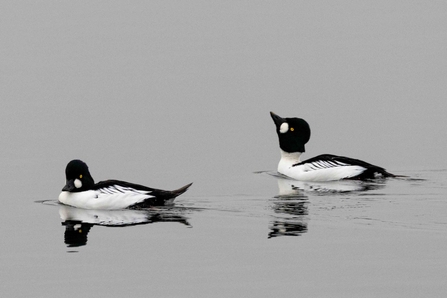
Two goldeneye
Photo credit: @MLP
The unfortunate - for birders - correlation between bad weather and good birds at the Wetlands was shown again on the 6th when CF found an immature/female red-breasted merganser on Lockwood in a biblical downpour. It's the first record of this genuine London scarcity at the reservoirs since 2017 and only the fourth year it has been seen in the last decade. The same rainstorm also dropped a red-headed goosander on No 1 island which - unlike its rarer counterpart which departed after just one day - stayed until the 19th largely on No 5.
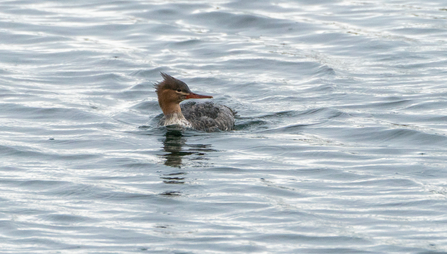
Red-breasted merganser
Photo credit: @AMP
By this time last year, an unprecedented 20 great egrets - including a flock of five - had been recorded at the Wetlands, raising hopes that they would follow little egrets in becoming regular visitors. But with no records by the end of October, it looked as if last year was a one-off until SO'D saw the first flying west over the reservoirs on the 13th. This was followed by a second on the 21st which, as if to make up for their absence, stayed into December. It often fed on the island on East Warwick and is only the second time the species had made more than a passing visit to the reservoirs.
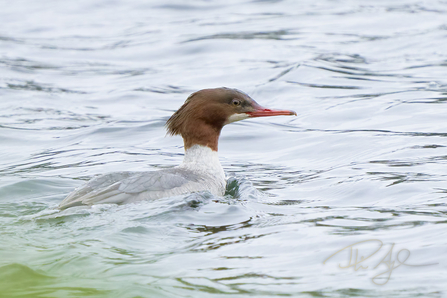
Goosander
Photo credit: @OwlTurbot
Marsh harrier is just about an annual visitor over the Wetlands but this year had been a blank until MK saw one flying north from Walthamstow Marsh on the 25th. A red kite was seen on the 19th and a buzzard on the 22nd and two adult peregrines were seen regularly including, unusually, sitting on a tree together on the No 1 island.
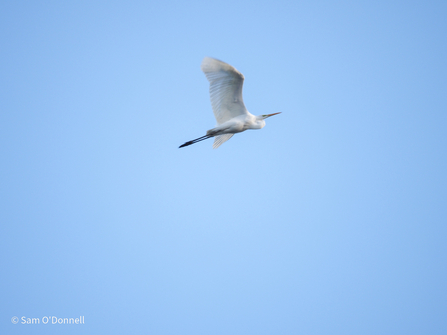
Great egret
Photo credit: @elliott81758817
Waders were very scarce this month with no snipe or green sandpipers seen. It also looks as if this might be the first year since 2019/2020 with no wintering common sandpiper. Lapwing, however, passed through in good numbers with singles on 14th and 18th, three on the 12th, eight on the 13th & 19th and 49 including a flock of 45 west on the 30th.
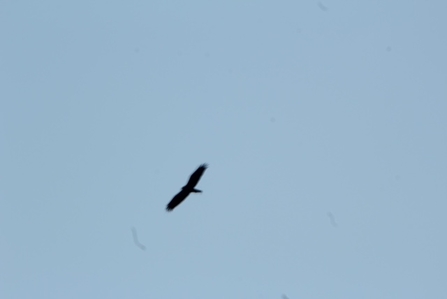
Marsh harrier
Photo credit: @MK
In contrast, November was surprisingly good for gulls with nine species recorded. The second record of mediterranean gull for the year was picked out by PL on the 10th with RE finding the second caspian gull the next day. His dedicated trawling through the gulls also turned up two yellow-legged gulls on the 17th. SO'D picked up an adult little gull - usually a Spring bird at the Wetlands - flying south towards Lockwood on the 20th. It fed over No 4 and East Warwick before continuing high south-west.
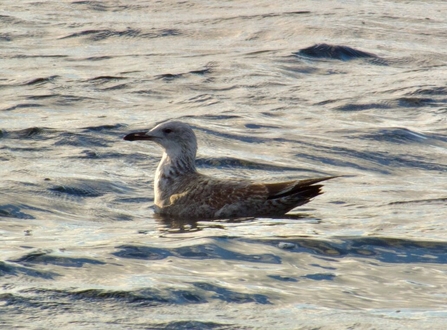
Caspian gull
Photo credit: @wheresrhys
Temperatures in November were over 2C higher than normal which might help explain some remarkable late records. A swallow arrived on the 11th and stayed for 10 days, usually feeding over Lockwood and High Maynard. Even later - and all the more surprising given there were none in October this year - was a wheatear which appeared on the 30th on Lockwood and stayed into December. It seems to be the latest ever record at the reservoirs.
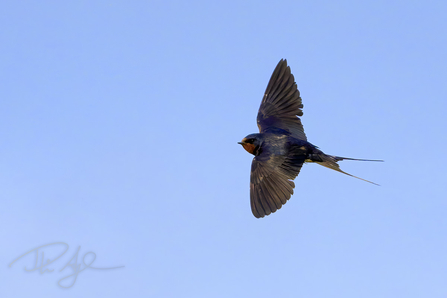
Swallow
Photo credit: @OwlTurbot
Another sign of the unseasonal temperatures were two blackcaps, which don't often winter at the Wetlands, on 20th. The warm weather had the opposite impact on fieldfare and redwing with just one or two seen feeding around the reservoirs throughout the month.
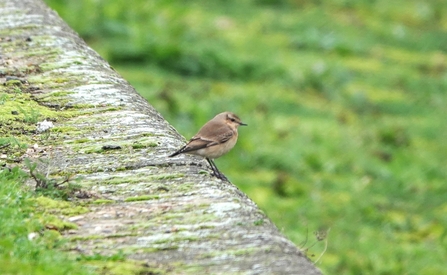
Wheatear
Photo credit: @LolBodini
Another migrant - more regular but very welcome - was the stunning male black redstart found by LB on Lockwood on the 21st which also showed well at the south end on the 24th & 25th. The only skylark records were on the 13th & 30th and while November was a no-show by the hoped-for Brambling, it did provide another lesser redpoll on the 9th.
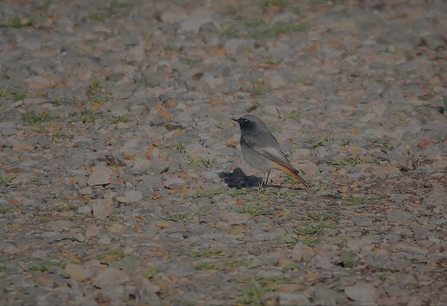
Black redstart
Photo credit: Chris Farthing
DB @porthkillier
Kindly sponsored by Leica Birding